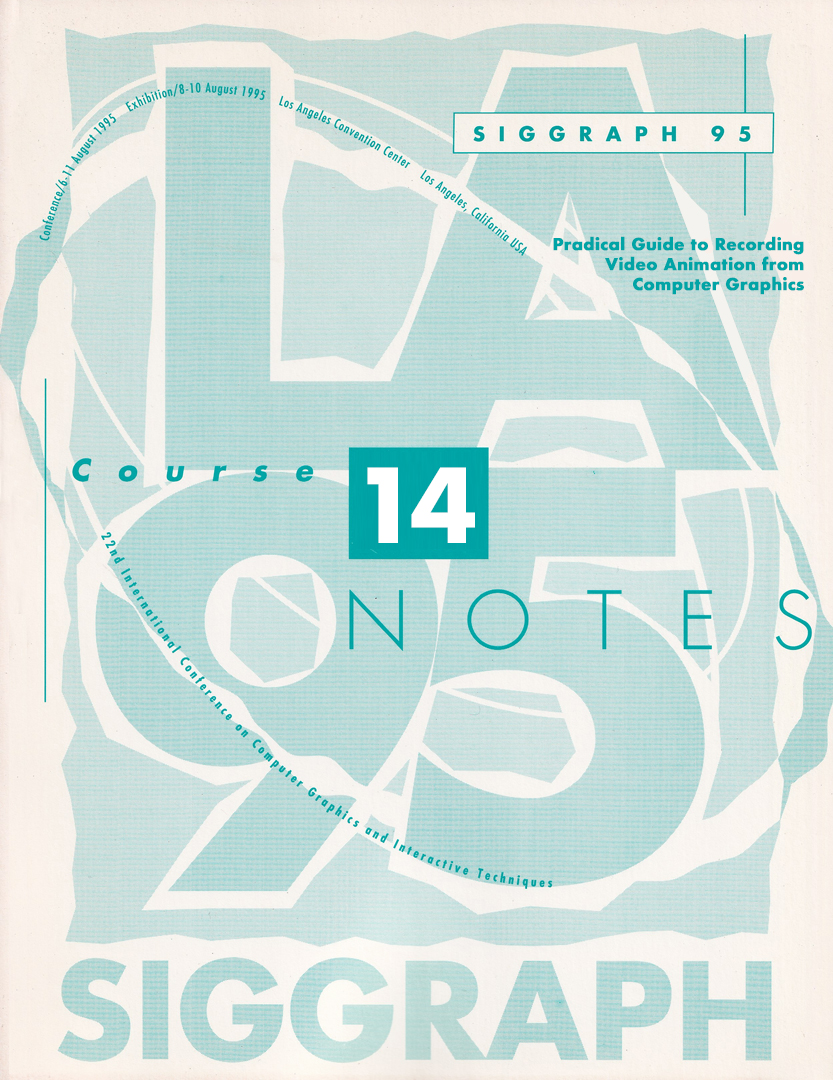“Practical Guide to Recording Video Animation from Computer Graphics” by Judd, Costigan, Gaunt, Mareda and Martinez
Conference:
Type(s):
Entry Number: 14
Title:
- Practical Guide to Recording Video Animation from Computer Graphics
Course Organizer(s):
Presenter(s)/Author(s):
Abstract:
Beginning
Prior knowledge of the basics of computer graphics is assumed. This course makes few assumptions about any knowledge of video theory, but it would be helpful. Attendees should at least be able to correctly connect a home VCR to a television.
Who Should Attend
People starting or planning to build a computer based video animation recording system, including desktop video or visualization centers for industrial and presentation uses.
Objectives
Our principal objective is to give an overview of setting up a computer based video animation recording system. Attendees should leave with enough information to know what to look for in purchasing equipment, how to assemble a system of their own, be knowledgeable enough as to know what hardware and software is needed, and what pitfalls to avoid when producing a video.
We also will explore upcoming horizons in computer video technology, such as MPEG2, multimedia, HDTV, and others.
Description
This course is directed toward those who want to record computer generated animation (Alias, Softimage, Wavefront, etc.), or animation of scientific and visualization data (A VS, in house software calculation results, raster images, etc.) onto video tape. To address the diverse needs and budgets of our audience, we will present a large range of video systems: from pointing a camera at a computer monitor, to a studio-quality recording/editing system, including desktop video. With these systems we will discuss: their advantages and disadvantages, the purpose of the equipment, the function of the hardware and software, and what to look for when purchasing video equipment. We will also discuss other related topics, such as audio, image compression, copyright laws, the future of video, and the pitfalls to avoid when producing a video. It is not possible to cover all aspects of this topic thoroughly in a single day, so we have chosen to include references to the detailed technical and theoretical topics, such as the technical description of the NTSC broadcast video signal.
Contents/Schedule PDF:
Contributed By:
- Mary Whitton
Location:
- Charles Babbage Institute Archives, University of Minnesota




